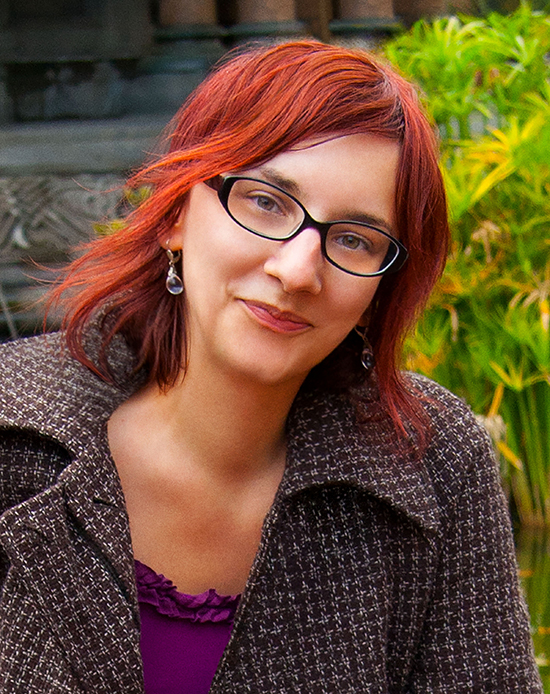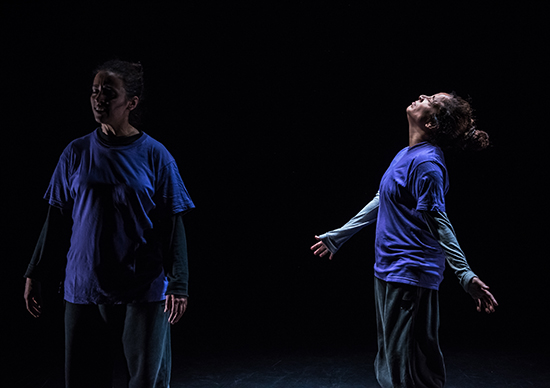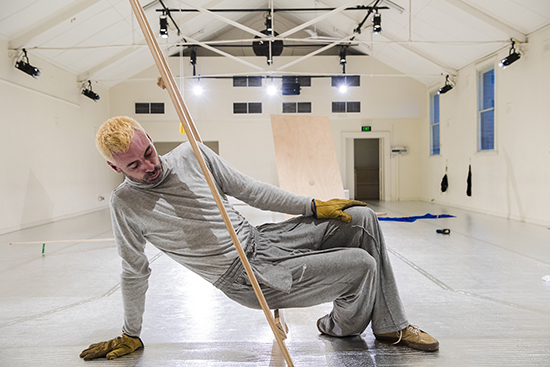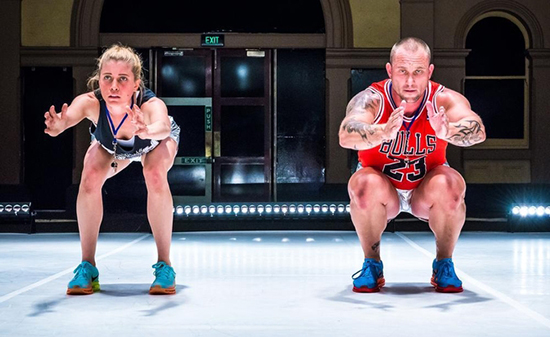Similitudes & affinities: Dancehouse & the world
Andrew Fuhrmann: interview, Angela Conquet, Dancehouse

Angela Conquet
photo Alfred Mrozicki
Angela Conquet
Melbourne’s Dancehouse, nestled between Victorian-era terrace homes on Princes Street in North Carlton, has long been an important centre for independent contemporary dance in Australia. Established in 1994, it is one of the few organisations in the country dedicated to the exploration of experimental choreography. But in recent years there’s been an extra buzz of enthusiasm and excitement: the feeling that something has finally clicked and that a niche has been filled.
The company has impressed many with its crucial involvement in large-scale events such as the Keir Choreographic Award and Dance Massive. At the same time, it has maintained a solid program of public performances, significantly increasing the number of international guests it presents while also providing a home for established and emerging local choreographers.
Generating urgency and dialogue
Artistic Director Angela Conquet, appointed in 2012 and formerly the dance director at the artist studio Mains d’Œuvres in Paris, has worked hard to provide context for these events and performances, and to create an atmosphere of urgency and anticipation.
“I think it’s my responsibility as Artistic Director to connect the present corporeal moment with other areas of life, with philosophy and sociology and politics,” she explains. “I think it’s my duty to create conversations and dialogues, to stir as much constructive debate as possible, connecting ideas with embodied gestures.”
An example of this work is the two-week program of events organised around French choreographer Xavier le Roy’s visit to Melbourne in December 2015. His performance of Self Unfinished (1998) was accompanied by two exhibitions, several public talks and a week-long workshop with local artists.
“What do you know about Xavier le Roy in Australia?” says Conquet, shrugging. “For me, it was really important to contextualise the work, and I could only do that, for example, by putting him in conversation with philosophers, urbanists, architects; people who think on a micro- and macro-economic level about how one produces work today.”
The immediate future looks bright for Dancehouse. Audience numbers are up, and this year the company was one of three Melbourne-based dance organisations to receive four-year funding from the Australia Council. But despite her success, Angela Conquet isn’t tooting her own horn. An artistic director ought to work in the shadows, she says, and she is suspicious of any attempt to glorify the role.

Nacera Belaza, The Shout
photo Gregory Lorenzutti for Dancehouse
Nacera Belaza, The Shout
International pairings
One program, however, that she does talk of with evident pride is Dance Territories, presented biennially with the Melbourne Festival. Dance Territories is a double bill which pairs an Australian artist with an international artist. It’s the only Dancehouse initiative where she feels she has a genuine curatorial role, and it’s the one in which she feels most invested as artistic director.
“I came up with the concept when I realised how much the work of artists here resonated with the work of artists I was seeing in Europe and in the US,” says Conquet. “Without realising it, they are exploring the same themes and topics but from different political or aesthetical angles.”
This year’s edition, Borderlines, which was the third, paired French-Algerian choreographer Nacera Belaza with local cross-disciplinary artist Sarah-Jane Norman.
“As an artistic director, I see so many shows. I see work in all four corners of the world. And sometimes I sit there and think, for example, oh, Nacera, she has a completely different body of work from Sarah-Jane’s and yet they are exploring the same thing. Different politics, different meaning, visually a very different thing, but the driving force feels the same.” [Read the RealTime review of Dance Territories, “The ambiguous cry of blood.”]
Sharing this moment of recognition with Australian audiences is, she claims, the great privilege of being an artistic director, and one that she takes very seriously. “We frame the connection, and then the journey is for you,” she says. “We’re just pointing you in the right direction.”
Is it surprising that the idea of connection should be so central to Conquet’s philosophy? Born in Romania, she grew up in a country which at that time was still relatively isolated from the West. She migrated to Paris as a teenager and, after a brief stint as an interpreter, dived into arts management. Her first role was with the Avignon Festival, where she worked for a group called Theorem, helping to build links between artists in Eastern Europe and the West. Now in Melbourne she is doing something similar, building links and making connections. And perhaps this explains why Dancehouse is so fascinating. In a country where we’re apt to fall into the trap of hoping for things elsewhere, this small company is pointing to similitudes and affinities that were always dreamed of but never noticed. Of course, Conquet insists that any work first needs to connect with an audience at a physical and emotional level. “It has to reach somebody,” she says. “If the work touches someone’s heart, and that feeling stays with them, then we’ve nailed it.”
A good indicator of this is if a show provokes a lot of debate or strong reactions. “At the first Dance Territories I had someone who stormed out of the room and told me I could go back home if this was the sort of work I was bringing,” she says. “They’d seen something in the work that really bothered them. And I thought: good.”
But audiences here are rarely so demonstrative, even if they have been moved. “In Melbourne I think that sometimes people are too well behaved,” admits Conquet. “They tend to applaud immediately. I love it when it’s not immediate. I love those five seconds of silence where you can feel that something has hit them. The longer the silence the more I feel I’ve achieved my goal.”

Matthew Day, Assemblage #1
photo Gregory Lorenzutti for Dancehouse
Matthew Day, Assemblage #1
International reach
Dancehouse has also been busy promoting links between the local, the national and the international dance community. One local artist who has benefited from this is Matthew Day, described by Conquet as part of a “new wave” of Australian choreographers with a minimalist, almost conceptual aesthetic.
In 2013, Day and fellow choreographer Sandra Parker presented separate works at the Faits d’Hiver Festival in Paris. In 2014, Day and Natalie Abbott presented at the Avignon Festival. And then last year, in 2015, he participated with James Batchelor in a workshop and presentation at the B.MOTION Festival in Bassano del Grappa, Italy.
These European peregrinations were all facilitated—at least in part—by the Dancehouse International program, a network of partnerships and alliances with likeminded companies in Australia and Europe. The program is an expression of Conquet’s belief that travel is the best way to encourage the development of emerging artists.
“The whole idea behind this was to get the artists circulating,” says Conquet. “It was really about exposing artists to a different context and a different territory and a different kind of audience.” Conquet’s biggest concern is that there aren’t more opportunities for this kind of circulation at a national level, and that there isn’t the infrastructure to tour dance works.
“I think it’s a shame to have so much effort, so much money and so much commitment from the artists and the presenters, and here they have a five-night season and then they’re gone,” she says. “When I arrived here I was outraged that the artists were not outraged. There is a sort of acceptance of this.”
She cites the example of Natalie Abbott’s Maximum, which not only toured to the OFF section of the Avignon Festival, but also to five Australian cities. “That should be the normal life of a work,” says Conquet. “The more you tour a work the better it gets. You can see how it has lived in the body through all the many different performances.”

Natalie Abbott, Donny Henderson-Smith, Maximum
photo Gregory Lorenzutti for Dancehouse
Natalie Abbott, Donny Henderson-Smith, Maximum
Dancehouse, Melbourne
RealTime issue #136 Dec-Jan 2016






